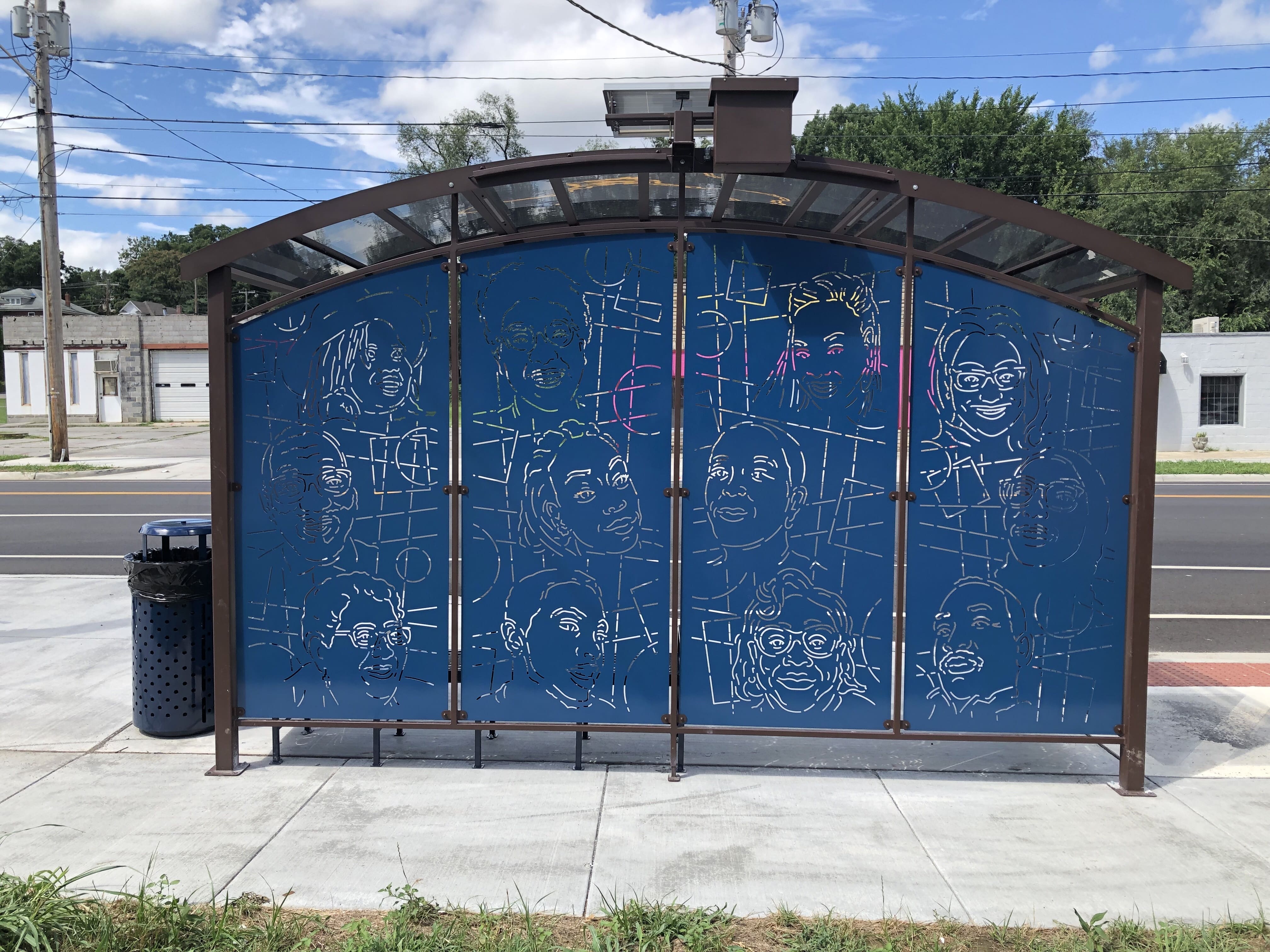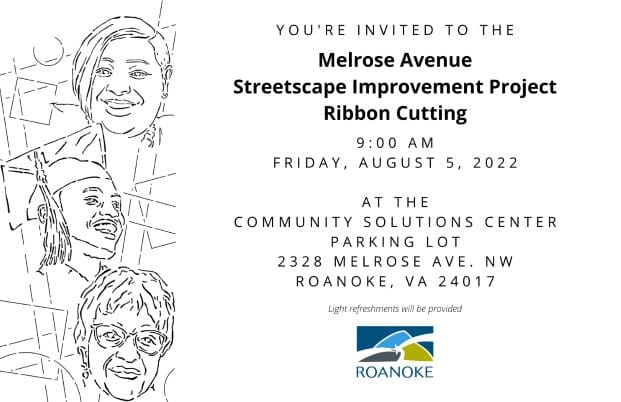Two covered bus shelters that incorporate public art are included in the streetscape improvements along Melrose Avenue.

The shelters, dedicated on August 5, were a collaborative partnership between the Roanoke Arts Commission, Valley Metro, HUD Community Resources and residents and stakeholders of MOTA. These shelters were designed by local artist Daniel Kuehl and fabricated by Renaissance Contract Lighting and Furniture. It celebrates the diversity and pride of the surrounding neighborhoods, emphasizing the potential of the people that live and work there.

The neighborhood guided the theme for the art, and a community selection panel chose the artist. The portraits depicted on the bus shelter panels are a result of that outreach and feature friends and neighbors that make up the fabric of NW Roanoke. The title is “Community.”
Read about the shelters in The Roanoker (Jan/Feb 23) (PDF here)
Watch the WDBJ article (Aug. 2, 2022)
Watch the WSLS Article (Aug. 5, 2022)
Watch the RVTV Article (Aug. 5, 2022)
BACKGROUND:
THE CALL: The City of Roanoke seeks artists to provide permanent works of art to be incorporated into four (4) new bus shelters in the Melrose-Orange Target Area (MOTA).
Proposals are due by 2 PM on May 19, 2021.
In partnership with Valley Metro, the City will install uniform bus shelters with custom details such as shelter panels and potential treatment of the underlying concrete pad. With the addition of artistic elements, the finished shelters should help communicate the neighborhood themes of “diversity, visibility, and possibility,” continuing the work of a stakeholder-driven process to bridge communities, celebrate diversity and history, and inspire residents to seek and realize opportunities for the future. The elements shall be designed through an inclusive, participatory process engaging neighbors, local business and property owners, and local students.
An engaged group of residents and stakeholders have expressed a desire for the shelters to incorporate color, educational themes, and a celebration of the diversity of the neighborhood, which incorporates a number of cultures and a large African-American population.
Background
The Melrose-Orange Target Area (MOTA) boundaries encompass portions of the Loudoun-Melrose and Melrose-Rugby neighborhoods and extend from 10th Street NW to 24th Street NW and Hanover Avenue NW to Loudon Avenue NW.
MOTA has been a focus for the City’s Federal Community Development Block Grants (CDBG) and HOME funding since 2014. During that period, a stakeholder driven process has resulted in more than 100 home rehabilitations and the dedications of the Feeding America Southwest Virginia Solutions Center and a new state-of-the-art branch of the Roanoke Public Library at the Goodwill of the Valleys Job Campus.
MOTA is at the intersection of diverse neighborhoods in the northwest quadrant of the community. It incorporates a busy commercial and transportation corridor.
During the streetscape portion of the project, the development of new bus shelters will improve the public transportation experience, encourage bus ridership, and provide an opportunity for the community to present the character and identity of the area.
More information on MOTA and its assets is available here.
WSLS coverage 3/11
WDBJ coverage 3/11
WFXR Living Local coverage 3/17
Qualification
The project is open to all artist teams. Student or youth involvement will be considered, if led by an adult. All applicants, regardless of race, age, sex, religion, nationality, origin, or disability will be considered. The City encourages Small, Women-owned, and Minority-owned business to submit a response to this URFP.
Read more by downloading the request for proposals.
See anticipated shelter dimensions here.
Budget
1. The City reserves the right to negotiate a final fee. Up to three finalists may be selected and if there be that many, video conference, phone or in person interviews may be required.
2. The offeror’s fees shall be capped at $2,500 per bus shelter, or $10.000 total. The fees shall include all community engagement and design cost, including travel and materials involved in the process.
3. Fabrication and Construction cost increases (when compared with a standard shelter will be capped at $4,000 per shelter to include all potential improvements in shelter, panels, and the concrete pad).
The offeror’s job can be seen as fostering a community vision for the project that the artist then translates for the production process through coordination with the fabricator. Not all artistic improvements, (e.g. color of power coating) will increase project cost.